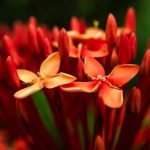Central Florida gardening offers a plethora of opportunities for enthusiasts to cultivate vibrant and lush gardens. With its unique subtropical climate, gardeners in Central Florida face special challenges and advantages when it comes to nurturing their green spaces. From selecting the right plants to combating pests and designing stunning landscapes, central Florida gardening ideas encompass a diverse range of strategies to create thriving outdoor sanctuaries.
The sunshine state’s climate provides an ideal environment for a variety of plant species to flourish. By choosing the best plants that are well-suited for Central Florida’s weather conditions, gardeners can ensure their gardens are bursting with color year-round. Watering and irrigation play a crucial role in maintaining healthy plants amidst Florida’s heat and humidity, making it essential for gardeners to implement efficient watering practices to keep their gardens thriving.
In addition to plant selection and irrigation techniques, designing a beautiful landscape is paramount in central Florida gardening. From creating visually striking layouts to incorporating sustainable practices, there are endless possibilities for crafting an enchanting oasis in your own backyard. By exploring the best practices for pest control, seasonal gardening tips, sustainability initiatives, and budget-friendly strategies specific to Central Florida, gardeners can elevate their outdoor spaces into stunning showcases of natural beauty.
Best Plants for Central Florida Gardens
Central Florida is known for its warm, sunny climate, making it an ideal location for a wide variety of plants to thrive. When selecting the best plants for your Central Florida garden, it’s important to consider not only the temperature and humidity but also the soil conditions and sun exposure in your specific area. With the right choices, you can create a beautiful and flourishing garden that will bring joy throughout the year.
Native Plants
One of the best options for Central Florida gardens is to choose native plants that are well adapted to the local environment. Native plants require less maintenance, are more resistant to pests and diseases, and support local wildlife such as pollinators. Look for species like Southern magnolia, blanket flower, beautyberry, and coontie that are well-suited to Central Florida’s climate and soil.
Tropical Plants
Given Central Florida’s subtropical climate, tropical plants can also thrive in this region. Consider adding colorful blooms like hibiscus, bougainvillea, plumeria, and bird of paradise to your garden for a vibrant tropical feel. These plants love the warm temperatures and abundant sunshine in Central Florida, providing a lush and exotic touch to your outdoor space.
Drought-Tolerant Plants
In Central Florida where water conservation is important especially during dry seasons, consider incorporating drought-tolerant plants into your garden design. Succulents like agave and aloe vera or ornamental grasses such as muhly grass and fountain grass are excellent choices that require minimal watering once established. By selecting drought-tolerant plants, you can create a low-maintenance garden while still adding beauty and charm to your landscape in Central Florida.
Whether you opt for native species, tropical blooms, or water-wise selections, choosing the best plants for your Central Florida garden is essential in creating a thriving outdoor oasis that will bring joy year after year. By considering factors like local climate conditions and soil quality when selecting your plant palette, you can create a beautiful landscape that will flourish under the Sunshine State sun.
Experiment with different varieties of flora to find what works best for your unique gardening space in Central Florida.
Watering and Irrigation Tips for Central Florida Gardens
Central Florida’s hot and humid climate presents unique challenges when it comes to watering and irrigation in gardens. The combination of high temperatures and frequent rainfall can make it tricky to maintain the right balance for plants to thrive. To navigate these conditions successfully, Central Florida gardeners may need to adopt specific strategies tailored to the region’s environment.
Choosing the Right Irrigation System
One key aspect of successful gardening in Central Florida is selecting the appropriate irrigation system for your garden. Drip irrigation systems are highly recommended for this region as they deliver water directly to the roots of plants, minimizing water waste through evaporation. Additionally, using a timer on your irrigation system can help ensure that your plants receive consistent watering without overwatering or underwatering them.
Monitoring Soil Moisture Levels
Central Florida’s heat and humidity can cause soil moisture levels to fluctuate quickly, so regular monitoring is essential. Invest in a moisture meter to keep track of the soil’s hydration levels and adjust your watering schedule accordingly. It’s crucial to strike a balance between providing enough water for your plants’ needs while preventing waterlogged conditions that can lead to root rot and other issues.
Xeriscaping Techniques
Incorporating xeriscaping techniques into your Central Florida garden can help reduce water consumption while still maintaining a lush and beautiful landscape. Planting drought-tolerant species, adding mulch to retain moisture, and grouping plants with similar water requirements together are all effective ways to conserve water in your garden. By following these practices, Central Florida gardeners can cultivate thriving green spaces while being mindful of environmental sustainability.
Creating a Beautiful Landscape in Central Florida
When it comes to creating a beautiful landscape in Central Florida, there are several design and layout ideas that can help you make the most of your garden space. Whether you have a small backyard or a large yard, incorporating elements such as pathways, focal points, and different plant heights can add visual interest and appeal to your outdoor space. Here are some tips to consider:
- Pathways: Create meandering pathways using materials like pavers, gravel, or stepping stones to guide visitors through your garden. This not only adds structure to your landscape but also allows for better access and enjoyment of your plants.
- Focal Points: Incorporate focal points such as a stunning sculpture, fountain, or colorful flower bed to draw attention and create visual interest in your garden. These elements can serve as centerpieces that anchor the overall design of your landscape.
- Plant Heights: Utilize plants of varying heights to add dimension and depth to your garden. Plant taller species at the back or center of beds, with medium-sized and low-growing plants towards the front. This layering technique creates a sense of balance and harmony in your landscape.
In addition to these design elements, it’s essential to consider the overall theme or style you want for your garden. Whether you prefer a formal, structured look with geometric shapes and symmetry or a more naturalistic approach with wildflowers and native plantings, ensure that all design choices align with your vision.
By carefully planning the layout and design of your Central Florida garden, you can create a beautiful oasis that reflects your personality and enhances the beauty of your outdoor space.
Remember that gardening in Central Florida comes with its unique challenges due to the region’s hot climate and frequent rainfall. Consider incorporating drought-tolerant plants native to the area that can thrive in these conditions while reducing water consumption.
Additionally, regular maintenance such as pruning, weeding, and fertilizing will help keep your garden looking its best year-round. By implementing these design ideas and practices specific to Central Florida gardening, you can create a stunning landscape that showcases the beauty of the Sunshine State while enhancing biodiversity and sustainability.
Pest Control Strategies for Central Florida Gardens
Central Florida is known for its beautiful gardens, but with that beauty comes the challenge of dealing with pests and diseases that can wreak havoc on your plants. One of the most common insect pests in this region is the whitefly, which can quickly infest plants like tomatoes, citrus trees, and hibiscus. To combat whiteflies, consider using natural predators like ladybugs or lacewings, or using insecticidal soap to keep their populations in check.
Another common issue in Central Florida gardens is fungal diseases, especially during the hot and humid summer months. Plants like roses and azaleas are particularly susceptible to powdery mildew and black spot. To prevent fungal diseases, make sure your plants have good air circulation by not overcrowding them. You can also use fungicidal sprays as a preventative measure or treat infected plants accordingly.
When it comes to pest control in Central Florida gardens, prevention is key. Regularly inspect your plants for any signs of pests or diseases so you can address them early on. Additionally, practicing good garden hygiene by removing any diseased or infested plant material will help prevent problems from spreading. By staying proactive and implementing these pest control strategies, you can keep your Central Florida garden healthy and thriving.
| Pest Control Strategies | Central Florida Gardens |
|---|---|
| Whitefly Management | Use natural predators or insecticidal soap |
| Fungal Disease Prevention | Provide good air circulation and use fungicidal sprays |
| Preventative Measures | Regularly inspect plants and practice good garden hygiene |
Seasonal Gardening Tips for Central Florida
Located in Central Florida, gardeners face unique challenges and opportunities due to the region’s subtropical climate. With hot summers, mild winters, and high humidity levels, it is essential to adapt gardening practices based on the season. Here are some seasonal gardening tips for Central Florida to help you maximize your garden’s potential all year round:
- Spring: Spring in Central Florida is a great time to plant a variety of vegetables and flowers. Consider planting tomatoes, peppers, squash, and zucchini during this season. It is also a good time to start preparing your soil by adding compost or organic matter to enrich its nutrients.
- Summer: The scorching heat of summer in Central Florida can be challenging for plants. Make sure to water your garden regularly, preferably in the early morning or late afternoon to prevent evaporation. Consider using mulch to retain moisture in the soil and protect plant roots from overheating.
- Fall: Fall is an excellent time for planting cool-season crops like lettuce, broccoli, carrots, and cabbage in your garden. It is also a good time to prune back overgrown plants and do some general maintenance before the winter arrives.
In addition to planting specific crops during each season, Central Florida gardeners should also pay attention to pest control and disease prevention throughout the year. Keep an eye out for common pests like aphids, whiteflies, and caterpillars that thrive in the warm climate of Central Florida. Implementing natural pest control methods such as introducing beneficial insects or using organic pesticides can help protect your garden without harming the environment.
Remember that gardening in Central Florida is a year-round activity that requires careful planning and maintenance depending on the season. By following these seasonal gardening tips and staying informed about best practices for central florida gardening ideas, you can create a thriving garden that flourishes regardless of the weather conditions.
Sustainability in Central Florida Gardening
When it comes to creating a sustainable garden in Central Florida, there are several eco-friendly practices that you can implement to minimize your impact on the environment. One strategy is to utilize native plants in your garden design.
Native plants are well-adapted to the local climate and soil conditions, requiring less water, fertilizer, and pesticides than non-native species. By incorporating native plants into your garden, you can attract local wildlife, such as birds and butterflies, while also reducing the need for maintenance.
Composting is another sustainable practice that can benefit your Central Florida garden. Instead of throwing away kitchen scraps and yard waste, composting allows you to turn these materials into nutrient-rich soil amendments that can be used to fertilize your garden. Not only does composting reduce the amount of waste that ends up in landfills, but it also helps improve soil health and structure, leading to healthier plants and increased water retention.
In addition to native plants and composting, implementing rainwater harvesting systems can help conserve water in your Central Florida garden. With Florida’s hot and humid climate, water conservation is key to maintaining a sustainable garden.
By collecting rainwater from your roof or gutters in barrels or tanks, you can use this free source of water to irrigate your plants during dry periods. Rainwater harvesting not only reduces your reliance on municipal water sources but also helps prevent stormwater runoff and erosion in your garden.
| Eco-Friendly Practice | Benefits |
|---|---|
| Utilizing Native Plants | Requires less water, attracts local wildlife |
| Composting | Reduces waste, improves soil health |
| Rainwater Harvesting | Conserves water, prevents stormwater runoff |
Central Florida Gardening on a Budget
In conclusion, gardening in Central Florida can be a fulfilling and rewarding experience, regardless of budget constraints. By exploring cost-effective ideas and implementing sustainable practices, gardeners of all levels can create beautiful landscapes that thrive in the Sunshine State’s unique climate. From choosing the right plants to proper watering techniques, there are various ways to maximize your garden’s potential without breaking the bank.
One important aspect of central Florida gardening on a budget is to prioritize which areas you want to focus on and invest in. By carefully planning and budgeting for essentials such as quality soil, mulch, and basic tools, you can create a solid foundation for your garden without overspending. Additionally, considering low-maintenance plants that are well-suited for the region can help save both time and money in the long run.
Furthermore, embracing sustainability practices in your central Florida garden not only benefits the environment but also helps reduce costs over time. Implementing composting, rainwater harvesting, and natural pest control methods can promote a healthy ecosystem within your garden while minimizing the need for expensive chemical products.
By incorporating these eco-friendly strategies into your gardening routine, you can enhance the beauty of your landscape while staying within your budget constraints. Overall, with careful planning, creativity, and a commitment to sustainable gardening practices, anyone can enjoy a thriving garden in Central Florida without breaking the bank.
Frequently Asked Questions
When Should I Start a Garden in Central Florida?
In Central Florida, the ideal time to start a garden is during the fall or spring. The temperatures are milder during these seasons, making it easier for plants to establish themselves and thrive. It’s important to consider the specific planting dates for various crops to ensure a successful harvest.
What Is the Best Low Maintenance Landscape in Florida?
The best low-maintenance landscape in Florida typically consists of native plants that are well-suited to the local climate and soil conditions. Plants like firebush, yucca, and muhly grass are great options as they require minimal watering and care once established. Incorporating mulch and drip irrigation systems can also help reduce maintenance needs.
What Is the Easiest Plant to Grow in Florida?
One of the easiest plants to grow in Florida is aloe vera. This succulent thrives in the state’s warm and sunny climate, requiring very little water to survive. Aloe vera is also known for its air-purifying properties and healing benefits, making it a popular choice for both indoor and outdoor gardens.

Welcome to my gardening blog! I am passionate about plants and enjoy sharing my knowledge and experiences with others. In this blog, I will write about everything related to gardening, from tips on how to get started to updates on my own garden projects.





